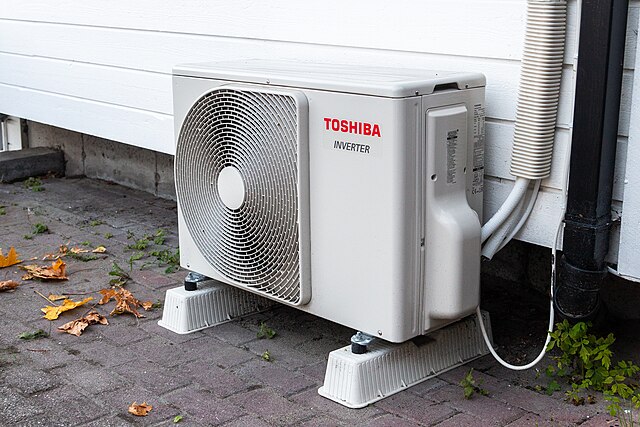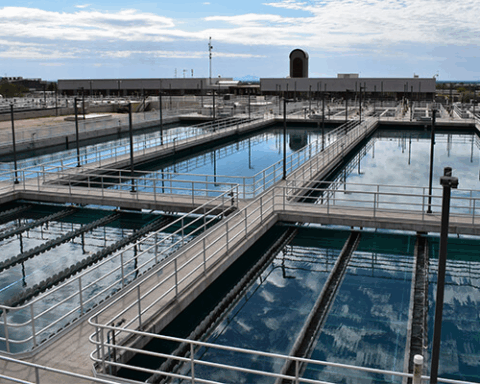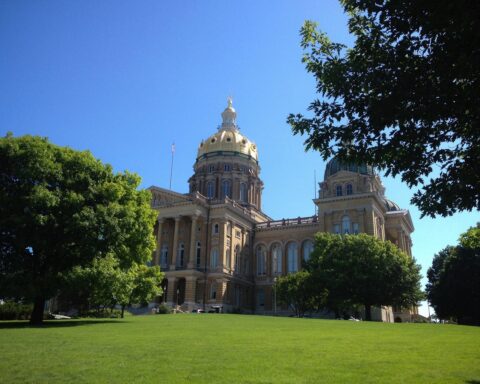Efforts to install more heat pumps in buildings across California are gaining steam thanks to a public-private partnership. The California Heat Pump Partnership (CAHPP) recently released a blueprint outlining strategies to install six million heat pumps in buildings statewide by 2030, representing a pivotal step in the state’s broader efforts to reach net-zero emissions by 2045. As part of this initiative, CAHPP is inviting more stakeholders to join its coalition, which already includes state agencies, major manufacturers, retailers, distributors, utilities and other market leaders.
The partnership is intended to accelerate the adoption of heat pump technology that can significantly reduce greenhouse gas emissions and improve energy efficiency in California’s buildings. California is one of nine states committed to ensuring heat pumps make up at least 65% of residential HVAC sales by 2030, according to recent reports.
Heat pumps use electricity to transfer heat rather than generate it, making them substantially more efficient than traditional gas heating systems, while reducing both greenhouse gas emissions and air pollution. When equipped with load flexibility features, they can also support grid reliability by shifting energy demand to off-peak hours. Deploying heat pumps has become a cornerstone of strategies to reduce climate pollution from buildings.
Despite progress, California faces significant hurdles in scaling up heat pump adoption, according to the blueprint. As of late 2024, approximately 1.9 million heat pump units were installed statewide—well below the 23 million units needed to fully decarbonize space and water heating in residential and commercial buildings. Without additional action, the state is on track to install only 3.4 million heat pumps by 2030, falling short of the 6 million goal.
The CAHPP blueprint identifies several key barriers hindering widespread adoption, including higher upfront installation costs compared to traditional systems, complex permitting and incentive processes, low customer awareness and a shortage of trained installers. A key challenge is the unfavorable economics created by California’s high electric-to-gas rate ratio, which can limit potential cost savings for consumers switching from gas-powered systems.
To overcome these hurdles, the blueprint outlines key strategies across four main categories: improving customer economics, streamlining sales and installation processes, accelerating market adoption and increasing market visibility.
To make heat pumps more competitive with gas, the plan calls for long-term, stable incentives to provide certainty and expand low-cost financing options. It also recommends directing 50% of program funds to low-income and disadvantaged communities, ensuring all Californians benefit from the clean energy transition.
To make installation easier, the blueprint proposes modernizing local heat pump permitting procedures and simplifying incentive program designs. The current permitting system is often complex, expensive and time-consuming, creating an uneven playing field where heat pumps face additional administrative burdens that traditional gas systems frequently avoid. A bill is currently making its way through California’s Senate that would streamline the permitting process for heat pump installations.
For accelerating adoption, the blueprint proposes a comprehensive marketing campaign targeting both consumers and contractors, alongside a workforce engagement initiative to address training gaps. It also suggests launching a dedicated “Heat Pump Week” to generate excitement and momentum through demonstrations, promotions and educational events.
The blueprint builds on California’s existing policy momentum. The state’s 2025 building energy code, which goes into effect January 1, 2026, will prioritize heat pumps in new construction and commercial retrofits. Additionally, the Bay Area Air District has passed zero-nitrogen-oxide standards for water heaters and furnaces, with the South Coast Air Quality Management District exploring similar standards.
The CAHPP’s Market Advisory Board includes representatives from major manufacturers like Carrier, Daikin, Fujitsu, Lennox, Mitsubishi Electric, Trane Technologies, LG Electronics, A.O. Smith, Rheem and Bosch. It also includes retailers and distributors such as Home Depot and Ferguson, as well as utilities including Sacramento Municipal Utility District, San Diego Gas & Electric, Edison International and Pacific Gas & Electric.
Possible funding sources for the blueprint’s strategies include cap-and-trade revenues, utility ratepayer programs and state tax dollars. The report recommends minimizing the use of ratepayer funding to avoid increasing California’s already high electricity bills. The full blueprint, “Scaling California’s Heat Pump Market: The Path to Six Million,” is available through the CAHPP website.
Photo Courtesy
Arnt Brandseth via Wikimedia Commons
Creative Commons Attribution-Share Alike 4.0













